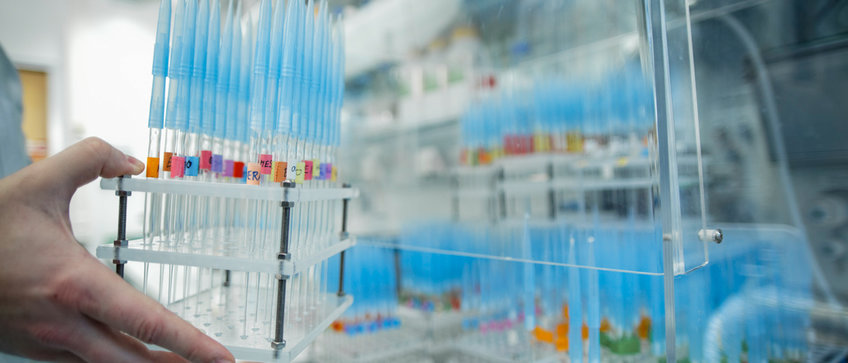
Analytical Chemistry

An odor is always a combination of several chemical components. The identification of single components of an odor is done by GC-MS (Gas Chromatography–Mass Spectrometry). With this technique the single components of an odor or a blend are first separated based on their chemical properties like boiling temperature or polarity and then ionized in order to create a very specific mass profile. This profile can then be compared to profiles of known compounds of chemical libraries or it can be further analyzed to elucidate the structure.
But before an odor can be analyzed via GC-MS it has to be collected from the odor source (for example a plant, fruit or insect) and prepared to be injected in the GC (gas chromatograph). In our lab we can collect and present odors with different methods.
For odor collection most commonly used are glass tubes which are filled with an absorbent filter material. An air stream is passed over the odor source and then guided through the filter material where the odor molecules are bound depending on their chemical properties. Afterwards the filter material is washed with a solvent resulting in a liquid sample containing the odor components which can be then injected into the GC.
A solvent-free odor collection method is SPME (Solid Phase Micro Extraction). SPME fibers are coated with adsorbent filter materials to collect chemicals. These fibers are then heated in the GC and release the adsorbed chemical components for measuring.
Another elegant method is thermal desorption. One of our MS is equipped with a TDU (Thermal Desorption Unit). With this unit we can heat filter materials or biological samples directly, without using a solvent, and the volatiles are transferred into the GC.
